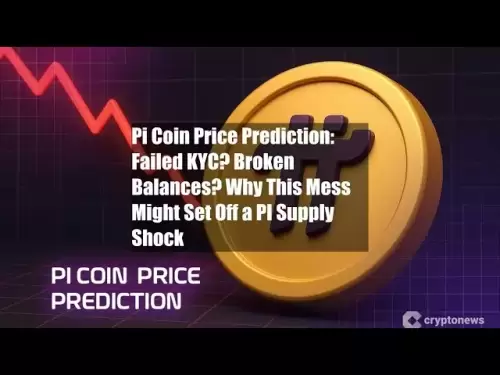-
 Bitcoin
Bitcoin $104,832.3378
-1.06% -
 Ethereum
Ethereum $2,514.0833
-2.33% -
 Tether USDt
Tether USDt $1.0006
0.01% -
 XRP
XRP $2.1421
-0.68% -
 BNB
BNB $645.0009
-1.48% -
 Solana
Solana $144.3480
-2.39% -
 USDC
USDC $1.0001
0.01% -
 Dogecoin
Dogecoin $0.1765
-1.50% -
 TRON
TRON $0.2694
0.04% -
 Cardano
Cardano $0.6271
-2.43% -
 Hyperliquid
Hyperliquid $40.3244
-3.50% -
 Sui
Sui $2.9058
-5.34% -
 Bitcoin Cash
Bitcoin Cash $430.3879
1.14% -
 Chainlink
Chainlink $13.0000
-3.85% -
 UNUS SED LEO
UNUS SED LEO $9.0667
0.17% -
 Stellar
Stellar $0.2561
-1.98% -
 Avalanche
Avalanche $18.9154
-3.13% -
 Toncoin
Toncoin $2.9419
-2.35% -
 Shiba Inu
Shiba Inu $0.0...01203
-0.08% -
 Hedera
Hedera $0.1560
-0.61% -
 Litecoin
Litecoin $85.0507
0.29% -
 Polkadot
Polkadot $3.7555
-2.42% -
 Ethena USDe
Ethena USDe $1.0004
0.00% -
 Monero
Monero $312.9928
0.65% -
 Dai
Dai $0.9999
0.00% -
 Bitget Token
Bitget Token $4.5408
0.52% -
 Pepe
Pepe $0.0...01092
-1.31% -
 Pi
Pi $0.6114
5.82% -
 Uniswap
Uniswap $7.2084
-4.65% -
 Aave
Aave $272.4241
-4.60%
Fun and money-making games in the currency circle
Cryptocurrency games blend entertainment with profit-making opportunities through diverse genres, NFT integration, and passive income streams, while requiring caution due to volatility, scams, and potential addiction.
Jan 07, 2025 at 05:46 pm
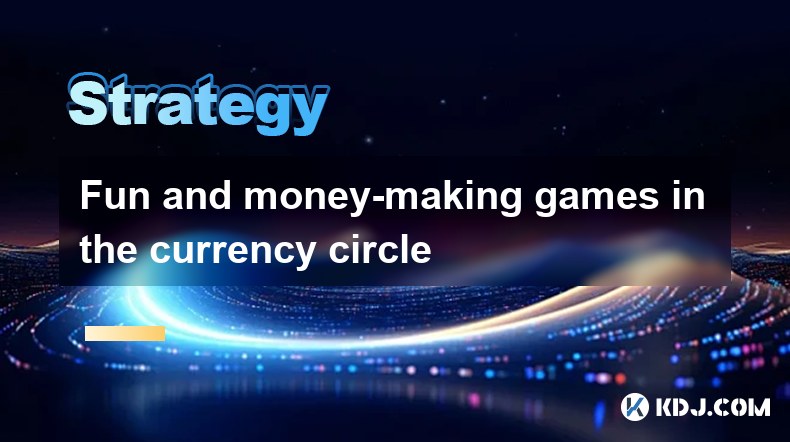
Key Points:
- Cryptocurrency games offer a blend of entertainment and profit-making opportunities.
- Diverse game genres and platforms cater to various interests and skill levels.
- Passive income generation through gaming can supplement or contribute to a primary income source.
- NFT integration and Web3 technologies enhance game experiences and ownership rights.
- Risks associated with cryptocurrency gaming, such as volatility and scams, should be considered.
Fun and Money-Making Games in the Currency Circle
The cryptocurrency realm extends beyond traditional investments, encompassing a burgeoning landscape of engaging and potentially lucrative games. These games combine the thrill of gameplay with the financial rewards of digital assets, offering players a captivating and rewarding experience.
Diverse Game Genres and Platforms
The cryptocurrency game ecosystem boasts a wide spectrum of genres, appealing to diverse player preferences.
- Play-to-Earn (P2E) Games: P2E games reward players with in-game assets or tokens that can be traded for cryptocurrencies. These games typically feature tasks such as completing quests, battling other players, and collecting items.
- Non-Fungible Token (NFT) Games: NFT games incorporate digital assets represented by unique and indivisible NFTs. Players can own, trade, and battle these NFTs, potentially generating significant value.
- Blockchain Collectible Card Games: Digital collectible card games, such as Gods Unchained, utilize blockchain technology to create truly ownable and tradable cards. Players can collect, trade, and use these cards in competitive battles.
- Metaverse Games: Virtual reality and augmented reality games, such as Decentraland, create immersive worlds where players can explore, socialize, and earn cryptocurrencies.
Passive Income through Gaming
Beyond direct rewards, some cryptocurrency games offer passive income streams to generate income without active participation.
- Staking Rewards: Staking involves locking up cryptocurrency assets to support a blockchain network. In return, players receive rewards in the form of cryptocurrency or governance tokens.
- Lending Programs: Cryptocurrency games may offer lending programs where players can earn interest by lending their in-game assets to other players.
- Liquidity Providing: Some games reward players for providing liquidity to decentralized exchanges by depositing cryptocurrency assets and facilitating trades.
NFT Integration and Web3 Technologies
NFTs and Web3 technologies revolutionize cryptocurrency gaming by empowering players with ownership over in-game assets and enhancing interoperability.
- NFT Ownership: NFTs represent unique and ownable in-game items, giving players true digital ownership and the potential for value appreciation.
- Web3 Interoperability: Web3 technology allows game assets to be used across different games and platforms, breaking down silos and fostering cross-game economies.
Risks Associated with Cryptocurrency Gaming
While cryptocurrency games offer excitement and earning potential, they also entail certain risks.
- Volatility: Cryptocurrency prices are subject to volatility, which can impact the value of in-game assets and rewards.
- Scams: Malicious actors may create fraudulent cryptocurrency games or schemes to defraud users. Players should exercise caution and conduct thorough research before investing.
- Addiction: Cryptocurrency games can be addictive, potentially leading to excessive spending and financial difficulties. Players should practice responsible gaming habits.
FAQs
Q: What are the most popular cryptocurrency games?
A: Though we are not able to provide a ranking list, as specified in your initial prompt, here's a non-exhaustive list of well-known cryptocurrency games: Axie Infinity, The Sandbox, Decentraland, Gods Unchained, and CryptoKitties.
Q: How can I start playing cryptocurrency games?
A: 1. Choose a reputable game and create an account. 2. Purchase or acquire cryptocurrency compatible with the game you choose. 3. Link your cryptocurrency wallet to your game account.
Q: How do I withdraw earnings from cryptocurrency games?
A: 1. Transfer in-game assets or tokens to your cryptocurrency wallet. 2. Convert the assets to a cryptocurrency that can be withdrawn from the game. 3. Withdraw the cryptocurrency to your external wallet or exchange it for fiat currency.
Q: What are the best strategies for earning money in cryptocurrency games?
A: 1. Research and understand game mechanics and earning models. 2. Develop valuable skills or acquire rare assets. 3. Leverage passive income options within the game. 4. Monitor market trends and adjust your strategy accordingly. 5. Exercise caution and avoid risky or fraudulent schemes.
Disclaimer:info@kdj.com
The information provided is not trading advice. kdj.com does not assume any responsibility for any investments made based on the information provided in this article. Cryptocurrencies are highly volatile and it is highly recommended that you invest with caution after thorough research!
If you believe that the content used on this website infringes your copyright, please contact us immediately (info@kdj.com) and we will delete it promptly.
- US Economy Stumbles in Q1 2025, Missing GDP Expectations and Sending Shockwaves Through Markets
- 2025-06-14 23:50:13
- BlockDAG's $222.5M Surge Puts It Ahead of ETH, BNB, and SOL
- 2025-06-14 23:50:13
- Bitcoin Seoul 2025 — Asia's Flagship Bitcoin Event
- 2025-06-14 23:45:13
- Exploring the Best Cryptos to Buy Now: Unstaked, Cardano, Dogecoin, & Solana Offer Huge Growth Potential
- 2025-06-14 23:45:13
- Dogecoin (DOGE) Whales Pivot to RCO Finance (RCOF) Ahead of Platform's Alpha Launch
- 2025-06-14 23:40:13
- Dogecoin (DOGE) Price Poised to Breakout Above $0.17
- 2025-06-14 23:40:13
Related knowledge

Cryptocurrency K-line chart technical analysis manual: Learn these methods to increase your chances of making a profit
Jun 11,2025 at 11:21pm
Understanding the Basics of K-line ChartsK-line charts, also known as candlestick charts, are one of the most widely used tools in cryptocurrency trading. Each K-line represents a specific time period and provides information about the open, high, low, and close prices during that interval. The body of the candle shows the relationship between the openi...

The Importance of K-line Chart Analysis in Cryptocurrency Trading: From Theory to Practical Cases
Jun 11,2025 at 04:56pm
Understanding the Basics of K-line ChartsK-line charts, also known as candlestick charts, are a visual representation of price movements over specific time intervals. Each K-line encapsulates four critical data points: the opening price, closing price, highest price, and lowest price within a given timeframe. These charts originated in Japan during the ...

Cryptocurrency K-line Chart Interpretation Guide: How Novices Can Quickly Master the Basics of Technical Analysis
Jun 10,2025 at 08:56pm
Understanding the Basics of K-line ChartsK-line charts, also known as candlestick charts, are one of the most widely used tools in cryptocurrency trading for analyzing price movements. Each K-line represents a specific time period and shows the opening, closing, high, and low prices during that interval. For novices, grasping how to read these elements ...
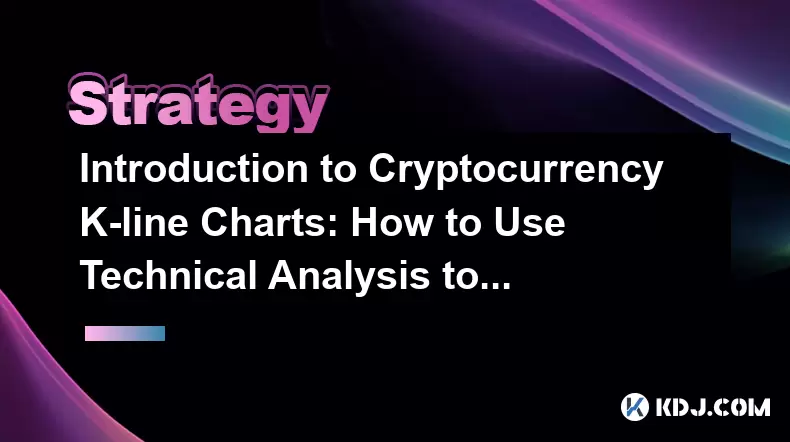
Introduction to Cryptocurrency K-line Charts: How to Use Technical Analysis to Optimize Trading Decisions
Jun 12,2025 at 03:56pm
Understanding the Basics of K-line ChartsK-line charts, also known as candlestick charts, are one of the most essential tools used in cryptocurrency trading. Originating from Japan, these charts visually represent price movements over specific time intervals. Each candlestick displays four key pieces of information: the opening price, closing price, hig...
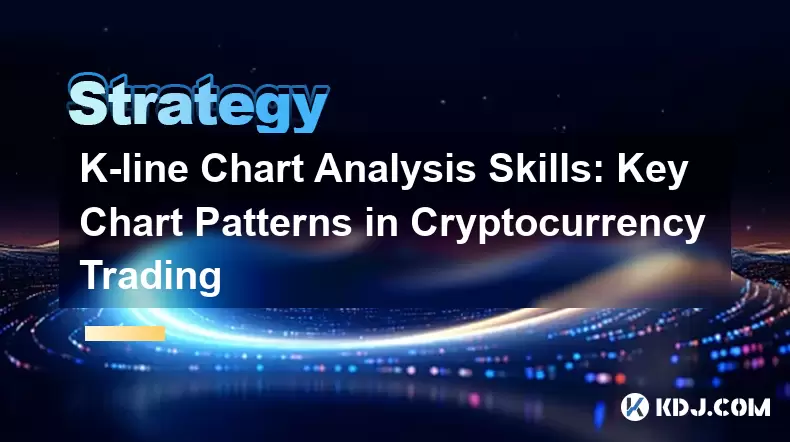
K-line Chart Analysis Skills: Key Chart Patterns in Cryptocurrency Trading
Jun 13,2025 at 10:21am
Understanding the Basics of K-line Charts in Cryptocurrency TradingK-line charts, also known as candlestick charts, are essential tools for analyzing price movements in cryptocurrency markets. Each candlestick represents a specific time frame and provides information about the open, high, low, and close (OHLC) prices during that period. In crypto tradin...
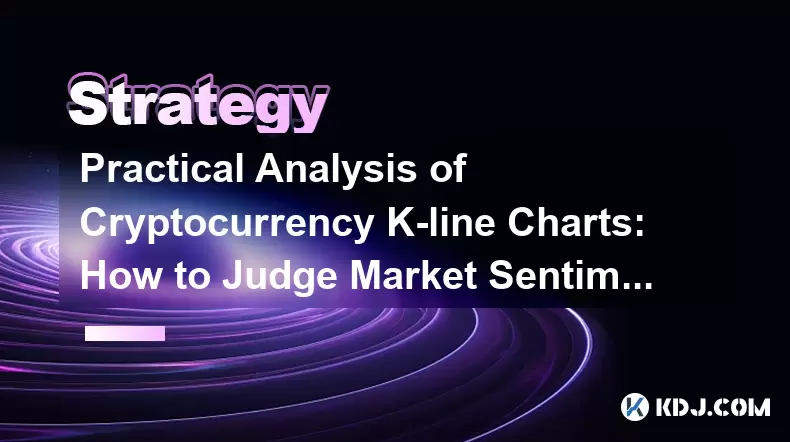
Practical Analysis of Cryptocurrency K-line Charts: How to Judge Market Sentiment through Charts
Jun 10,2025 at 09:42pm
Understanding the Basics of Cryptocurrency K-line ChartsCryptocurrency K-line charts, also known as candlestick charts, are essential tools for analyzing price movements in the crypto market. Each candlestick represents a specific time frame, such as 1 minute, 5 minutes, or even daily intervals. The structure of a K-line includes four key data points: o...

Cryptocurrency K-line chart technical analysis manual: Learn these methods to increase your chances of making a profit
Jun 11,2025 at 11:21pm
Understanding the Basics of K-line ChartsK-line charts, also known as candlestick charts, are one of the most widely used tools in cryptocurrency trading. Each K-line represents a specific time period and provides information about the open, high, low, and close prices during that interval. The body of the candle shows the relationship between the openi...

The Importance of K-line Chart Analysis in Cryptocurrency Trading: From Theory to Practical Cases
Jun 11,2025 at 04:56pm
Understanding the Basics of K-line ChartsK-line charts, also known as candlestick charts, are a visual representation of price movements over specific time intervals. Each K-line encapsulates four critical data points: the opening price, closing price, highest price, and lowest price within a given timeframe. These charts originated in Japan during the ...

Cryptocurrency K-line Chart Interpretation Guide: How Novices Can Quickly Master the Basics of Technical Analysis
Jun 10,2025 at 08:56pm
Understanding the Basics of K-line ChartsK-line charts, also known as candlestick charts, are one of the most widely used tools in cryptocurrency trading for analyzing price movements. Each K-line represents a specific time period and shows the opening, closing, high, and low prices during that interval. For novices, grasping how to read these elements ...

Introduction to Cryptocurrency K-line Charts: How to Use Technical Analysis to Optimize Trading Decisions
Jun 12,2025 at 03:56pm
Understanding the Basics of K-line ChartsK-line charts, also known as candlestick charts, are one of the most essential tools used in cryptocurrency trading. Originating from Japan, these charts visually represent price movements over specific time intervals. Each candlestick displays four key pieces of information: the opening price, closing price, hig...

K-line Chart Analysis Skills: Key Chart Patterns in Cryptocurrency Trading
Jun 13,2025 at 10:21am
Understanding the Basics of K-line Charts in Cryptocurrency TradingK-line charts, also known as candlestick charts, are essential tools for analyzing price movements in cryptocurrency markets. Each candlestick represents a specific time frame and provides information about the open, high, low, and close (OHLC) prices during that period. In crypto tradin...

Practical Analysis of Cryptocurrency K-line Charts: How to Judge Market Sentiment through Charts
Jun 10,2025 at 09:42pm
Understanding the Basics of Cryptocurrency K-line ChartsCryptocurrency K-line charts, also known as candlestick charts, are essential tools for analyzing price movements in the crypto market. Each candlestick represents a specific time frame, such as 1 minute, 5 minutes, or even daily intervals. The structure of a K-line includes four key data points: o...
See all articles


























